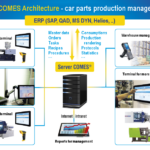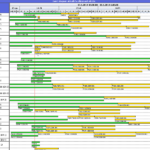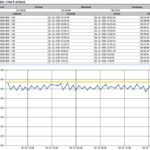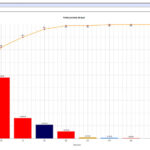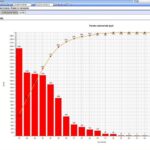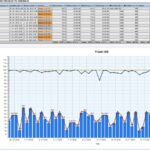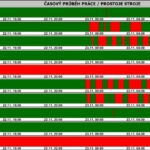COMES solution allows the investors to make use of either complex functionality or just the functions they need. In case of future needs they can easily add so far unused functions. We will in brief describe groups of the functions.
Configuration and Preparation of COMES system
COMES can easily be configured for a particular use using classifiers (people, shifts, machines, forms, working procedures, technological procedures, etc.)
Fundamental functions of technical production preparation are usually dealt with in the enterprise IT system (ERP). COMES system takes over thus created information and uses it for planning, management, monitoring and tracking of production
Material Preparation and Warehouse Management
COMES includes WMS functions for receiving raw materials and warehouse management, managing products and their expedition. A part of the application is a mobile interface for warehouse operators (barcode reader with a display) who can process real-time data. Integrated Material Preparation functions together with internal logistics, support overall optimization of the enterprise in collaboration with its own production management.
Production Data Acquisition and Transmission of Control Programs To Machines
This is a basic function for collecting the production and technological data, production rendering with the possibility of optional transmission of control programs to the injection presses within COMES database.
The COMES architecture for Control of Plastics Pressing Shops is shown on the picture below.
Acquisition of technological parameters (temperatures, pressures, cushion, operation times, etc.) is performed on each machine cycle. The values of selected parameters are checked for permitted tolerance and, if exceeded, the worker in charge is notified (SMS, e-mail). It is therefore possible to display how the parameter developed in the course of time (trends).
Production data such as machine cycles, downtimes, breakdowns, nonconforming products and kinds of nonconformities are collected. Another plants, the data is collected from, are raw materials treatment, dryers of raw materials, assembly shops and others including the possibility of monitoring humidity and temperature of storage areas.
Operator Terminals
Operators prefer a well arranged touch like control. The terminal can control either single or multiple machines. The operator terminals may be differentiated by degree of protection and are equipped with barcode readers or RFID and/or label printer.
They serve the following purposes:
- User log-in (operator, service engineer, etc.), consequently all terminal operations become auditable (traceable to a specific user).Barcode readers can be used to identify both employees (attendance cards, RFID chips) and packaging materials, materials, and molds
- Part of the functionality may be checking on training of operators in terms of their skills, health and safety and other union regulations (i.e. automotive industry)
- Dispatch of production orders or operations
- Viewing production documentation (instructions, drawings, adjusting directions)
- Startup of electronically assigned production order or Startup by manual scanning the production order
- Display of statuses (plan vs. reality)
- Data input (downtime classification, nonconforming products, operations and activities)
- Calling for maintenance (SMS, e-mail)
- Production rendering – Manually completed or nonconforming pieces may be added to automatically counted pieces. It replaces paper like forms and saves production administration. Data can simultaneously be transferred to ERP system.
- As an assistance to a service engineer, actual machine control program, documentation, maintenance information can be downloaded/uploaded
Communication with ERP System
Data is imported to COMES from ERP system which remains the primary source of data. Data, which ERP system does not include, is entered in COMES system. COMES allows the data, that had to previously be manually input into ERP system, to be entered or automatically processed and consequently sent to ERP.
Operational Production Management and Evaluation
By using their PCs, the managers at all levels, have access to information on the performance of production orders and production statuses in the form of graphically displayed technology. This makes it possible to promptly intervene in the production.
Configurable statistics of strokes, downtimes, reports on results of production orders, utilization, production statistics KPI (i.e. OEE) are available.
Simultaneously the maintenance staff is notified about planned tasks and requirements for potential faults rectification. This gives the production team, at all levels, the opportunity to optimize results of its production.
Production Planning
A detailed production planning, usually weekly, is a key element in management of the plastics molding manufacture. COMES APS is able to calculate an optimum plan based on input criteria, respond quickly to possible changes in the customers’ orders even during a shift, or insert an urgent order. The system creates a suitable sequence of production orders for individual machines and lines, mold exchange and machine adjustment schedules, as well as plan for human resources – operators. Thanks to the installed production data acquisition it shows plan-like status vs. reality status in real time. Plant managers can promptly respond to the actual situation of pressing shops so as to meet agreed dispatch deadlines.
The administration of below stated agenda is related to detailed planning of production with subsequent processes (with respect to the scope of an article, only the basic points are mentioned):
- Production orders administration – required production
- Products – parameters specification
- Consumption of raw materials and other sources
- Manufacturing facilities – production rate, number of workers needed for operation
- Line adjustment – adjustment of the technology needed to switch the product
- Restrictions on raw materials – maximum amount available in time
- Limitations of storage areas for products and intermediate products
- Outages – planned shutdowns of production facilities
- Optimum production plan build-up with respect to applicable means of production including workforce planning
Some of the input data can be imported from the enterprise-wide system (ERP), other data sources or can directly be created using COMES planning software.
The production plan calculation in COMES application is based on the input information entered through an automatic planning function or manually. The automatic planning is a complex function which uses the optimization algorithms to create the plan usually with the following objectives (picture below).
- Maximum utilization of production capacity
- Minimizing the time losses between products exchange
- Minimizing the number of workers
- Optimizing the availability of raw materials for production
- Spreading the production evenly over time (optional)
The plan is computed from thousands of variants in terms of tens of seconds, while the most suitable ones are offered. The planner picks up the best option, modifies it if needed, and releases it for production. The plan is now available to all users in tabular form and is electronically dispatched to the production workplaces. On doing so, data is automatically added to individual reports e.g. tables of scheduled workers, number of required packaging for dispatch and etc.
Assignment of the Plan to Production and Feedback
By using the information on actual state of production a plan completion status is graphically displayed (picture below). The plan completion visualization serves as a feedback for planners and production managers, who can promptly change the plan so as to meet the dispatch deadlines of orders.
Maintenance Management
Part of COMES system are machines maintenance management functions. Data can be entered through terminals while all operator or maintenance like inputs are registered thus creating an electronic data record system, which also records operating hours and number of cycles. It is possible to plan preventive maintenance and keep history of repairs of the equipment. Maintenance and adjusters are notified of activities scheduled and are provided with documents (descriptions, drawings, sketches, photographs) which are kept up to date due to a single repository of documents.
Injection Molds
COMES system records history of each mold, its usage for pressing, maintenance, overhauls. To identify the mold, RFID chips or operator terminal mobile barcode readers can be used (similar to storage terminals). It is therefore possible to keep files of the mold’s location, number of cycles, notes on the mold’s usage.
Summary of the Benefits of Application
COMES system enables you to plan capacity of plastics pressing shops, control raw materials and products warehouses, production logistics, to monitor progress of production orders, optimize quality, operatively control and document production and render it to economic/accounting IT systems and, at the same time, manage maintenance of machines and their parts.
The users appreciate the complexity of the solution, a rapid return on investment and the support of the COMES manufacturer strong team.
- COMES architecture for Plastics molding shop
- Production schedule of Plastics molding shop with real-time feedback
- COMES report – analysis of machine cycles
- COMES report – pareto of downtimes
- COMES report – pareto of non-conformities
- COMES statistics – efectiveness of shifts
- COMES TV Andon – visualization of the Moulding shop production
